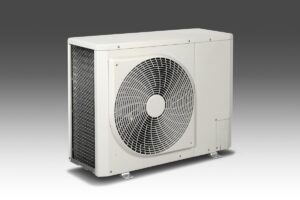HVAC
Ductless vs. Central Air Conditioning: Pros, Cons, and Cost Comparisons

Following the heat is, of course, proper air condition, which is the difference between a warm home and a sweating home. Between central air condition and ductless air condition, however, choosing between them is baffling. Both of them have their ups and downs, from installation to energy usage. Hereafter is a guide to provide you with an overall comparison so that you can make a wise choice based on your budget and requirement.
The Essentials in Perception: Central Air Conditioning Mass Cooling
Central air conditioners, the standard in almost every residence, are made up of a system of ducts drawing the cooled air downwards throughout the home. A central unit, normally outside, makes the air cold, and then returns it through the ducts and into the room through a vent. This system offers ongoing, whole-house cooling and is best suited for large homes or homes which are already ducted. Installation is costly and invasive where ducts must be installed. The Targeted Approach: Ductless Mini-Splits and Zoned Comfort
Ductless mini-splits are more localized cooling. Mini-splits consist of an exterior compressor unit and a single or multiple indoor air handlers, and the systems are connected by refrigerant piping and electrical cable. Ductless systems provide conditioned air directly into zones or rooms, and room temperature can be controlled on a need basis. The zoned system has the potential to enhance efficiency and comfort, especially in non-ducted residences.
Installation Costs and Factors: Trimming Initial Expense
Central air conditioners are more expensive to install, especially where ducts need to be fitted. Duct fittings for the entire house involve a significant amount of money in terms of materials and manhours.
Ductless mini-split systems are more expensive per unit but are less limited in their installation. They require only a small hole in the wall for the refrigerant lines and are thus less invasive and sometimes easier to install. This advantage also becomes astronomically beneficial in older homes or additions where ducts are impossible.
Energy Efficiency and Operating Costs: Upfront Cost vs. Long-Term Savings
Ductless mini-split systems are more energy efficient compared to central air conditioners. The zoned system also has the benefit of cooling only the occupied areas, with minimal energy loss.
Ductless systems are also not plagued with energy losses through leaky ducts, one of the causes of such wastage of energy in central systems. Although more is initially invested, energy saved in the long term can possibly recover the investment. Central systems will, nevertheless, perform less efficiently, particularly where ducts are poorly insulated and sealed.
Comfort and Control
Customizing Your Home’s Climate Ductless mini-splits are more comfortable and more controllable. With a unique temperature in each zone, customized comfort is provided, perfect for individual preference. Central air systems, while they provide whole-house cooling around the clock, have less temperature control flexibility. If one requires a cooler space and the other a warmer space, then ductless is the solution.
Aesthetics and Space Requirements: Balancing Form and Function
Central systems occupy very little space in the structure, although ducting is concealed behind ceilings and walls. The outdoor condenser unit may be large and very unattractive, however. Ductless mini-split systems offer more indoor unit mounting flexibility with wall-mount, ceiling-cassette, or floor-standing options. The units themselves are slim and less obtrusive than older window units.
Maintenance and Longevity: Keeping the System Healthy
Both central and ductless air conditioners must be serviced every now and then to operate at their maximum efficiency and enjoy the longest lifespan. Both central and ductless air conditioner units must have filters replaced from time to time, coils cleaned, and professional servicing. Ductless systems require filter replacement more frequently because they have smaller filters. Central systems require duct cleaning and inspection for free airflow and mold. For expert maintenance and reliable service, homeowners can turn to Airview HVAC in McKinney, TX, a trusted company known for keeping both central and ductless systems running efficiently and safely.
If you are in the area, you can visit them here:
Noise Levels: Keeping Quiet Operation in Mind
Mini-splits are quieter compared to central air conditioners. Mini-splits are quieter as there is no inconsiderate ductwork and new technology compressors are utilized. Central air conditioners are loud due to the outdoor condenser and air handler.
Value to the Property and Resale
How Making Your Home More Desirable Will Affect Property Value. A still newer, more efficient air conditioner will give resale value to your home and make future owners even more willing to make it even more appealing to them. Zone cooling and ductless mini-split efficiency are the new number one preference for home owners. Central air systems might still be around, but less efficient and flexible.
Final Thoughts
The best option is based on your home layout, budget, and requirement. If you require zoned cooling, efficiency, and installation flexibility, the ductless mini-split system can be the optimal solution. If you already have ducts and you want whole-house cooling to be easy, a central air conditioner can be the optimal solution. Your future energy-efficiency and comfort plans should make you make the most realistic decision.
















